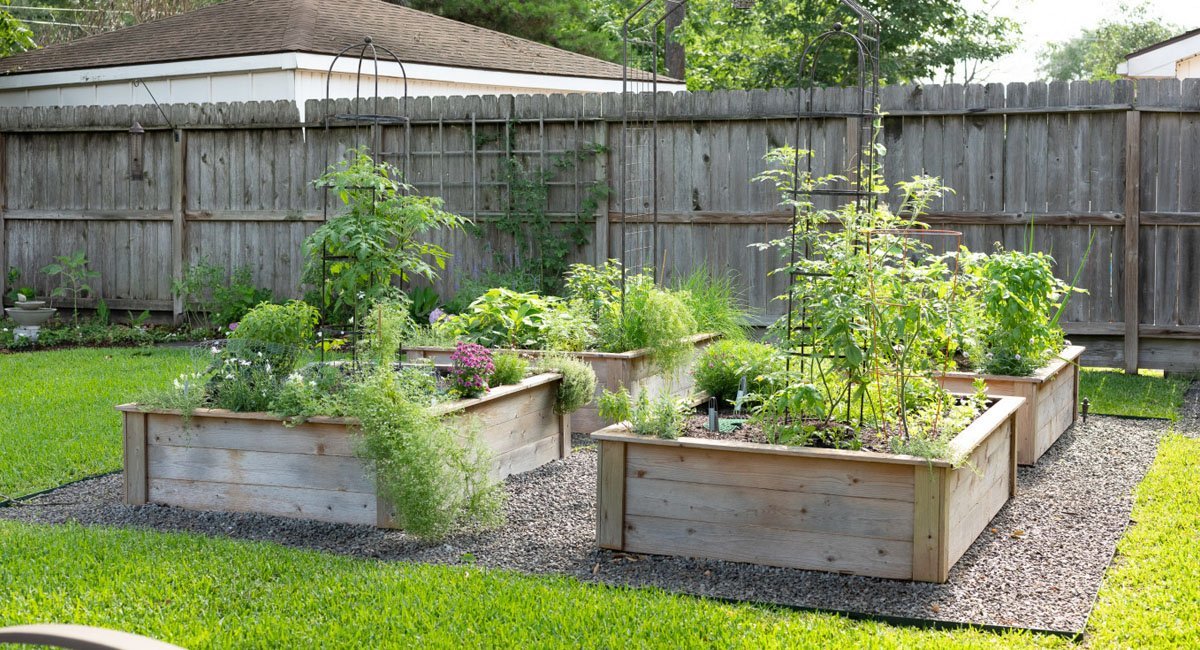Garden landscaping – Building raised planting beds
Raised plant and vegetable beds offer many benefits in today’s gardens and allotments. There are several advantages in building raised beds in your garden, many of which can be carried out by yourself or a by a garden designer.
Access
Great for people with back problems where normal gardening poses a problem. Also allows wheelchair access, designed in the right way, there is no reason that a garden designed for a disabled person should offer any less planting space. Because raised beds are made so that the whole bed is accessible from 3 (if the bed abuts a wall) to all 4 sides this makes them easy to maintain for all levels of gardener.
Control your soil pH.
With raised garden beds you have to choice of what soil goes into the bed. For instance if your garden soil is of an acidic nature and you feel limited by what plants you can grow raised beds can be filled with a pH neutral soil which is freely available to buy in whatever quantity you wish. Like wise if your existing garden soil is of a higher pH level (7 or above for alkaline) and you wish to make this more acidic then ericaceous compost can be added to achieve this.
Better drainage
If you have a heavy, clay soil which you find difficult to work then a raised bed remedies this by allowing you to start from scratch, you could even start with putting a layer of large stones, broken bricks, tiles or any building rubble laying around as a bottom drainage layer then topping off with soil.
Soil retention
Where flower beds, patios and paths are on ground level this often leads to soil and other debris blowing over these surfaces leading to more tidying up. With raised beds this is kept neatly contained and the wind will rarely disturb the soil enough to blow it out of it bed.
Fewer weeds
If your bringing in soil to fill up your raised beds then this will contain less weed seeds than your existing garden soil which leads to less weeding. When filling the new bed with soil leave a good 15cm gap from the top of the soil level to the top of the raised bed, this will allow you to top up with a 10cm layer of mulch be it gravel, pebbles, bark etc which will further reduce the need for weeding and watering.
No dig gardening
As raised beds are not walked over when plant maintenance work is carried out the soil does not become compacted therefore cutting out the need to carry out the ‘yearly’ dig over. Of course all soil needs attention but this can simply be achieved by forking over organic matter once a year with a hand fork.
Aesthetics
Raised beds can be built from various landscaping materials. Some of the main types of landscaping materials used to build these features are brick walling, stone walling, railway sleepers, concrete blocks rendered and painted, scaffolding boards, stone filled gabions, prefabricated units made from plastic. Some of these options will give a modern feel to the garden, others a more rustic charm.
Seating
A well thought of and constructed raised bed will also give you the advantage of extra seating, this is proved to be extremely advantageous in small gardens where the need for plants and seating compete head to head, this is a great solution to this problem.
Garden design and landscaping is hard work, if you decide to carry out the task yourself be prepared for some back breaking work then sit back and admire your handy work for years to come, alternatively call in a professional garden landscaper who will be happy to advise on the different options and materials available, what does and does not fall into your budget.
